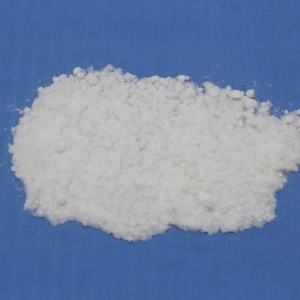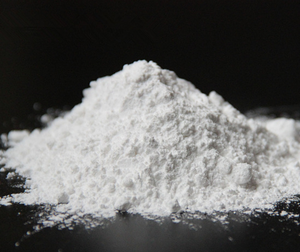1. hemical Nature and Structural Characteristics
1.1 Molecular Composition and Self-Assembly Actions
(Calcium Stearate Powder)
Calcium stearate powder is a metal soap formed by the neutralization of stearic acid– a C18 saturated fatty acid– with calcium hydroxide or calcium oxide, generating the chemical formula Ca(C ₁₈ H ₃₅ O ₂)TWO.
This substance comes from the wider course of alkali earth metal soaps, which exhibit amphiphilic residential or commercial properties due to their double molecular architecture: a polar, ionic “head” (the calcium ion) and 2 long, nonpolar hydrocarbon “tails” originated from stearic acid chains.
In the strong state, these particles self-assemble into layered lamellar structures via van der Waals communications between the hydrophobic tails, while the ionic calcium centers give architectural communication through electrostatic pressures.
This distinct arrangement underpins its capability as both a water-repellent agent and a lube, making it possible for efficiency across varied product systems.
The crystalline kind of calcium stearate is usually monoclinic or triclinic, relying on processing conditions, and exhibits thermal security approximately around 150– 200 ° C prior to decomposition starts.
Its reduced solubility in water and most natural solvents makes it specifically appropriate for applications needing relentless surface area modification without seeping.
1.2 Synthesis Paths and Industrial Manufacturing Approaches
Readily, calcium stearate is created using 2 main courses: direct saponification and metathesis reaction.
In the saponification procedure, stearic acid is reacted with calcium hydroxide in an aqueous tool under regulated temperature (generally 80– 100 ° C), followed by filtration, washing, and spray drying to yield a fine, free-flowing powder.
Alternatively, metathesis involves responding salt stearate with a soluble calcium salt such as calcium chloride, precipitating calcium stearate while creating sodium chloride as a byproduct, which is then eliminated through comprehensive rinsing.
The choice of technique affects particle size circulation, pureness, and recurring wetness content– crucial criteria impacting efficiency in end-use applications.
High-purity qualities, particularly those meant for pharmaceuticals or food-contact materials, undergo added purification steps to fulfill governing requirements such as FCC (Food Chemicals Codex) or USP (USA Pharmacopeia).
( Calcium Stearate Powder)
Modern manufacturing centers use constant reactors and automated drying systems to guarantee batch-to-batch consistency and scalability.
2. Useful Roles and Mechanisms in Material Systems
2.1 Inner and Exterior Lubrication in Polymer Processing
Among one of the most essential functions of calcium stearate is as a multifunctional lube in thermoplastic and thermoset polymer production.
As an inner lubricant, it decreases thaw viscosity by hindering intermolecular friction in between polymer chains, facilitating much easier circulation throughout extrusion, injection molding, and calendaring processes.
Simultaneously, as an external lube, it migrates to the surface area of liquified polymers and creates a slim, release-promoting film at the interface in between the material and processing equipment.
This twin activity lessens pass away build-up, stops adhering to molds, and improves surface finish, thereby enhancing manufacturing performance and item quality.
Its performance is especially remarkable in polyvinyl chloride (PVC), where it likewise contributes to thermal security by scavenging hydrogen chloride launched throughout degradation.
Unlike some artificial lubes, calcium stearate is thermally secure within common handling home windows and does not volatilize prematurely, guaranteeing consistent performance throughout the cycle.
2.2 Water Repellency and Anti-Caking Qualities
Due to its hydrophobic nature, calcium stearate is extensively used as a waterproofing agent in construction products such as cement, gypsum, and plasters.
When included into these matrices, it aligns at pore surface areas, minimizing capillary absorption and boosting resistance to moisture access without considerably changing mechanical strength.
In powdered products– including fertilizers, food powders, pharmaceuticals, and pigments– it functions as an anti-caking agent by coating private bits and preventing load triggered by humidity-induced connecting.
This enhances flowability, handling, and application precision, particularly in automated product packaging and mixing systems.
The system depends on the formation of a physical barrier that hinders hygroscopic uptake and lowers interparticle adhesion pressures.
Due to the fact that it is chemically inert under typical storage space conditions, it does not react with energetic ingredients, preserving life span and functionality.
3. Application Domains Across Industries
3.1 Function in Plastics, Rubber, and Elastomer Manufacturing
Beyond lubrication, calcium stearate acts as a mold launch agent and acid scavenger in rubber vulcanization and synthetic elastomer production.
During intensifying, it makes sure smooth脱模 (demolding) and safeguards expensive steel dies from rust caused by acidic byproducts.
In polyolefins such as polyethylene and polypropylene, it enhances diffusion of fillers like calcium carbonate and talc, adding to consistent composite morphology.
Its compatibility with a vast array of ingredients makes it a recommended part in masterbatch solutions.
Moreover, in eco-friendly plastics, where conventional lubricants might disrupt destruction paths, calcium stearate provides a more ecologically compatible option.
3.2 Usage in Drugs, Cosmetics, and Food Products
In the pharmaceutical sector, calcium stearate is frequently utilized as a glidant and lube in tablet compression, guaranteeing constant powder flow and ejection from punches.
It avoids sticking and topping problems, straight affecting production yield and dosage harmony.
Although sometimes puzzled with magnesium stearate, calcium stearate is favored in certain formulas because of its higher thermal security and reduced capacity for bioavailability disturbance.
In cosmetics, it functions as a bulking agent, structure modifier, and emulsion stabilizer in powders, structures, and lipsticks, supplying a smooth, smooth feel.
As a preservative (E470(ii)), it is accepted in several territories as an anticaking representative in dried out milk, seasonings, and cooking powders, sticking to rigorous limits on maximum permitted focus.
Governing compliance calls for strenuous control over heavy steel material, microbial lots, and recurring solvents.
4. Safety, Environmental Effect, and Future Overview
4.1 Toxicological Profile and Regulatory Status
Calcium stearate is typically recognized as safe (GRAS) by the U.S. FDA when made use of based on good manufacturing practices.
It is inadequately absorbed in the stomach tract and is metabolized right into naturally occurring fatty acids and calcium ions, both of which are physiologically convenient.
No considerable evidence of carcinogenicity, mutagenicity, or reproductive toxicity has been reported in basic toxicological studies.
Nonetheless, inhalation of fine powders throughout commercial handling can cause respiratory system irritation, demanding suitable air flow and individual safety equipment.
Ecological influence is very little because of its biodegradability under aerobic conditions and reduced water poisoning.
4.2 Arising Trends and Sustainable Alternatives
With raising emphasis on green chemistry, research study is concentrating on bio-based production routes and lowered environmental impact in synthesis.
Initiatives are underway to obtain stearic acid from renewable sources such as palm kernel or tallow, improving lifecycle sustainability.
In addition, nanostructured types of calcium stearate are being discovered for boosted diffusion performance at reduced does, potentially reducing overall material usage.
Functionalization with other ions or co-processing with all-natural waxes might expand its utility in specialty coatings and controlled-release systems.
In conclusion, calcium stearate powder exemplifies exactly how a basic organometallic compound can play an overmuch huge duty across commercial, customer, and medical care sectors.
Its combination of lubricity, hydrophobicity, chemical security, and regulative acceptability makes it a foundation additive in contemporary formulation scientific research.
As sectors remain to require multifunctional, risk-free, and sustainable excipients, calcium stearate remains a benchmark product with enduring relevance and advancing applications.
5. Vendor
RBOSCHCO is a trusted global chemical material supplier & manufacturer with over 12 years experience in providing super high-quality chemicals and Nanomaterials. The company export to many countries, such as USA, Canada, Europe, UAE, South Africa, Tanzania, Kenya, Egypt, Nigeria, Cameroon, Uganda, Turkey, Mexico, Azerbaijan, Belgium, Cyprus, Czech Republic, Brazil, Chile, Argentina, Dubai, Japan, Korea, Vietnam, Thailand, Malaysia, Indonesia, Australia,Germany, France, Italy, Portugal etc. As a leading nanotechnology development manufacturer, RBOSCHCO dominates the market. Our professional work team provides perfect solutions to help improve the efficiency of various industries, create value, and easily cope with various challenges. If you are looking for calcium stearate vegan, please feel free to contact us and send an inquiry.
Tags: Calcium Stearate Powder, calcium stearate,ca stearate
All articles and pictures are from the Internet. If there are any copyright issues, please contact us in time to delete.
Inquiry us

